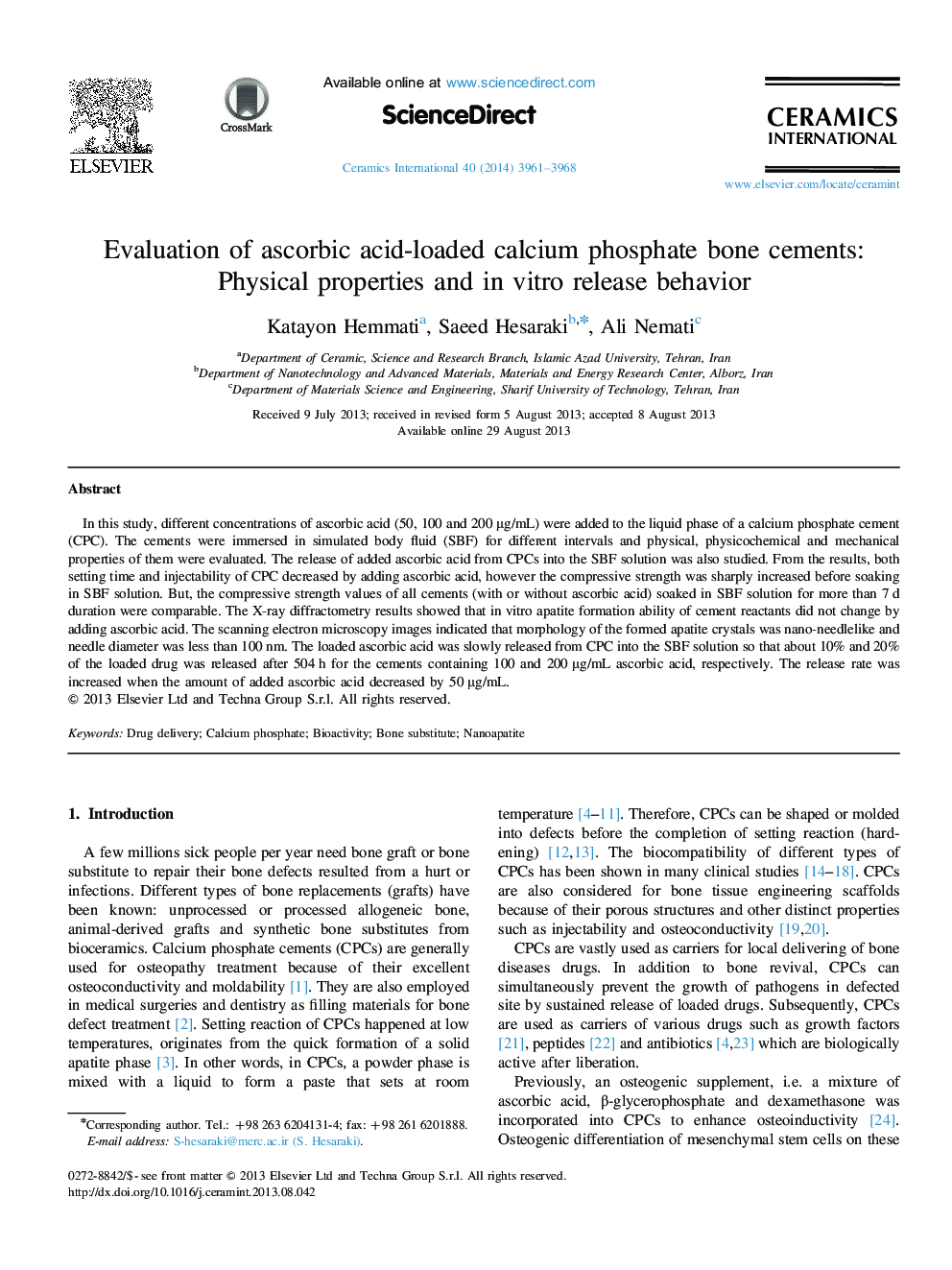| Article ID | Journal | Published Year | Pages | File Type |
|---|---|---|---|---|
| 1461411 | Ceramics International | 2014 | 8 Pages |
In this study, different concentrations of ascorbic acid (50, 100 and 200 µg/mL) were added to the liquid phase of a calcium phosphate cement (CPC). The cements were immersed in simulated body fluid (SBF) for different intervals and physical, physicochemical and mechanical properties of them were evaluated. The release of added ascorbic acid from CPCs into the SBF solution was also studied. From the results, both setting time and injectability of CPC decreased by adding ascorbic acid, however the compressive strength was sharply increased before soaking in SBF solution. But, the compressive strength values of all cements (with or without ascorbic acid) soaked in SBF solution for more than 7 d duration were comparable. The X-ray diffractometry results showed that in vitro apatite formation ability of cement reactants did not change by adding ascorbic acid. The scanning electron microscopy images indicated that morphology of the formed apatite crystals was nano-needlelike and needle diameter was less than 100 nm. The loaded ascorbic acid was slowly released from CPC into the SBF solution so that about 10% and 20% of the loaded drug was released after 504 h for the cements containing 100 and 200 µg/mL ascorbic acid, respectively. The release rate was increased when the amount of added ascorbic acid decreased by 50 µg/mL.
